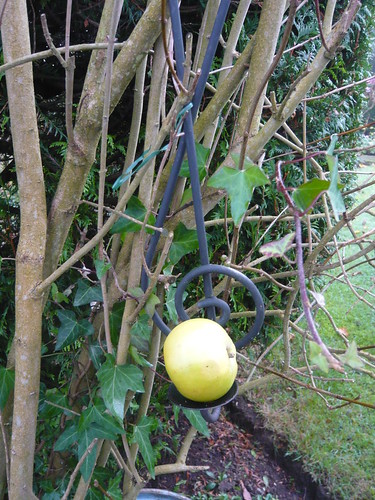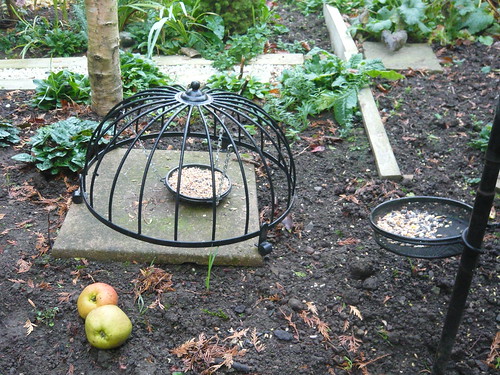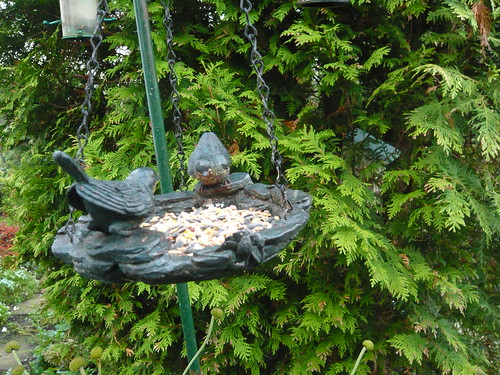
Special Ideas to Help Birds and Wildlife in your Garden
Feeding and Feeders
- I like the use of a candle or tea light holder to carry a suet ball or piece of fruit on the spike that normally holds the candle.
- Seed feeders come in various shapes. Look for one that allows the seed to run freely and not get wet in a sump. Wet seed will germinate and block the hole.
- Include special feeds for special birds like meal worms, fruit even pasta as well as nuts seeds and your usual bird mix.
- Put some feed on the ground. I put a cover over the seed and bird food. You can get different sized spaces for larger or smaller birds.
- Make or buy a feeder that will stop seed falling on the ground in the slightest puff of wind.
- Make your own fat ball food with seed and fat or suet.
Grow Plants That Help Wildlife
- Grow bushes which produce berries.
- Grow plants that produce plenty of seedheads for winter food. Leave them all winter if necessary.
- Plant perennials that provide all year around habitats rather than short lived annuals.
- Select plants that are rich in pollen and nectar chives nettles and Monardia for example.
- Plant native species and not exotics and F1 plants
Special help for Special Visitors
- Have more than one supply of water for drinking.
- Add some sugar to water to attract butterflies.
- keep water and food away from cats and predators.
- Do not be too tidy, leave an area where wood can rot and feed insects.
- Avoid chemical sprays.
- Plant up winter hanging baskets to provide habitat and varied food sources.
- Think vertically as well as horizontally. Birds like to be above ground for feeding and safety.
- Keep feeders, water and food areas clean.
- Donot bother feeding the sea birds in our picture.
Sources.
Ten Plants for birds
‘ * Centaura scabiosa – the seeds provide food for birds and other wildlife
* Taxus baccata – this native evergreen shrub produces berries which provide food for birds and other wildlife
* Campanula carpatica – a compact nectar-rich variety that sits well in gaps between paving
* Fagus sylvatica – a native tree that supports a number of insects and food for animals
* Anthriscus sylvestris – a nectar-rich plant attracting lacewings and hoverflies which eat aphids
* Ilex aquifolium – this evergreen shrub produces winter berries which provide food for birds and other wildlife
* Cotoneaster horizontalis – this deciduous shrub produces brilliant red berries in autumn which provide food for birds and other wildlife
* Buddleja davidii – the ultimate attraction for butterflies
* Achillea millefolium – nectar-rich plants which are wonderful for attracting bees and hoverflies
* Lonicera fragrantissima – a fragrant shrub which makes a nesting site for birds and a refuge for insects’


